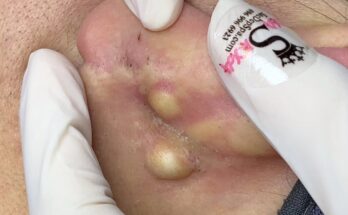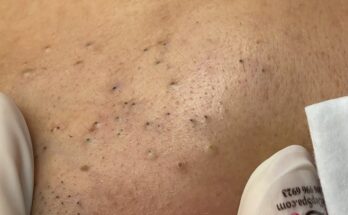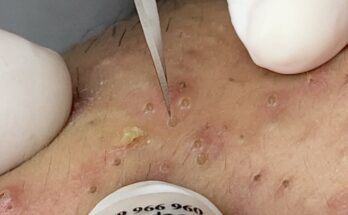
Both blackheads and sebaceous filaments are common skin concerns that can appear similar, but they’re fundamentally different in their composition and how you should treat them. Understanding the distinction is key to achieving clearer skin without causing damage.
What Are Blackheads?
A blackhead is a type of acne caused by a pore becoming clogged with a mixture of sebum (skin oil), dead skin cells, and bacteria. When this blockage is exposed to air, the melanin in the dead skin cells oxidizes, turning the tip black. They are often raised, feel bumpy to the touch, and are considered a form of acne that requires careful treatment.
Both blackheads and sebaceous filaments are common skin concerns that can appear similar, but they’re fundamentally different in their composition and how you should treat them. Understanding the distinction is key to achieving clearer skin without causing damage.
What Are Blackheads?
A blackhead is a type of acne caused by a pore becoming clogged with a mixture of sebum (skin oil), dead skin cells, and bacteria. When this blockage is exposed to air, the melanin in the dead skin cells oxidizes, turning the tip black. They are often raised, feel bumpy to the touch, and are considered a form of acne that requires careful treatment.
Licensed by Google
What Are Sebaceous Filaments?
Sebaceous filaments, on the other hand, are a natural and normal part of your skin’s anatomy. They’re tiny, tube-like structures that line the inside of your pores. Their job is to channel sebum from the sebaceous gland to the skin’s surface. When these filaments fill with sebum, they can become visible, appearing as small, gray, or yellowish dots, particularly on the nose and chin where pores are larger. They are not a form of acne and do not turn black from oxidation.
How to Tell the Difference
- Color: Blackheads are dark black or brown, while sebaceous filaments are typically gray or yellowish.
- Appearance: Blackheads are often slightly raised and singular, whereas sebaceous filaments look like small clusters of dots that are flush with the skin.
- Feel: Blackheads feel bumpy, while sebaceous filaments are smooth.
- Extraction: When you squeeze a sebaceous filament (which you shouldn’t do!), a waxy, translucent, or whitish “worm” of sebum comes out. Squeezing a blackhead produces a firm, dark plug.
Treatment
Because sebaceous filaments are a natural part of the skin, you can’t get rid of them permanently. However, you can make them less noticeable with regular use of salicylic acid or retinoids, which help to dissolve the sebum and keep pores clear. Blackheads, as a form of acne, respond well to these same ingredients, but may also require more targeted treatments. It’s crucial to avoid aggressive squeezing or picking of either, as this can lead to irritation and scarring.


